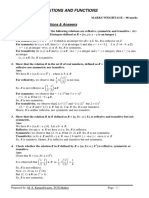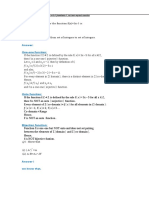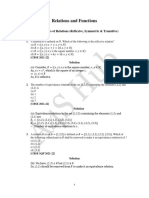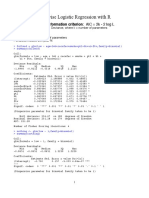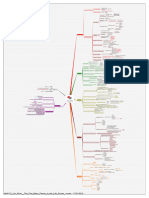0% found this document useful (0 votes)
23 views107 pagesComplete Relation and Function 12th Class
The document discusses various types of relations in mathematics, including reflexive, symmetric, transitive, and equivalence relations, along with examples and proofs of their properties. It also covers functions, their classifications, and injectivity and surjectivity concepts. Additionally, it includes problems related to these topics, particularly in the context of JEE preparation.
Uploaded by
thangarajushinuCopyright
© © All Rights Reserved
We take content rights seriously. If you suspect this is your content, claim it here.
Available Formats
Download as PDF, TXT or read online on Scribd
0% found this document useful (0 votes)
23 views107 pagesComplete Relation and Function 12th Class
The document discusses various types of relations in mathematics, including reflexive, symmetric, transitive, and equivalence relations, along with examples and proofs of their properties. It also covers functions, their classifications, and injectivity and surjectivity concepts. Additionally, it includes problems related to these topics, particularly in the context of JEE preparation.
Uploaded by
thangarajushinuCopyright
© © All Rights Reserved
We take content rights seriously. If you suspect this is your content, claim it here.
Available Formats
Download as PDF, TXT or read online on Scribd
/ 107





